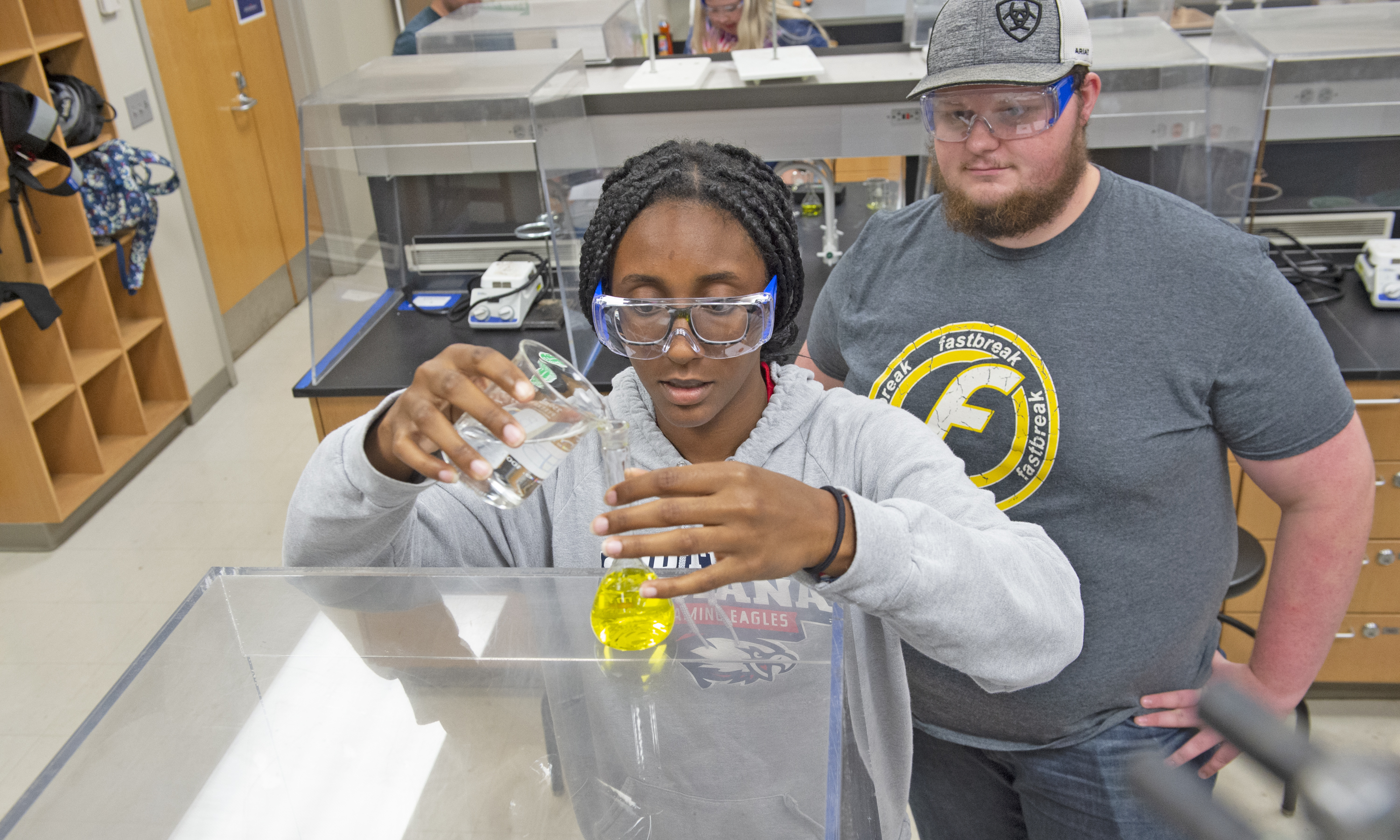Program Objectives and Student Outcomes
Program Mission
Our mission is to prepare graduates who will excel in industry, graduate programs, professional schools or high school teaching through rigorous chemistry classroom, laboratory and research experiences.
Program Objectives
- To provide students the scientific skills and chemical knowledge essential for success.
- To train students in proper laboratory and safety techniques.
- To equip students with effective scientific communication skills.
- To encourage the pursuit of lifelong learning.
- To foster a commitment to ethical and social responsibilities.
Student Outcomes
Students who complete the chemistry and biochemistry degree programs:
- Have firm foundations in the fundamentals and application of current chemical and scientific theories.
- Have the critical thinking, problem solving and analytical reasoning abilities needed to identify and solve chemical problems and explore new areas of research.
- Are able to design, carry out, record and analyze the results of chemical experiments and are familiar with standard safety practices, equipment, procedures, and techniques common to most working laboratories.
- Are able to use modern library searching and retrieval methods to obtain information about a topic, chemical, chemical technique, or an issue relating to chemistry.
- Are able to effectively communicate the results of their work to both chemists and non-chemists in oral or written form.
- Find gainful employment in industry or government, be accepted at graduate or professional schools or find employment in school systems as instructors or administrators.
- Have the personal attributes and ethical sensibilities that will enable them to function as effective scientists.
-
Understand the ethical considerations, safety issues, and waste disposal requirements important to their field.
Program Performance Criteria (Metrics)
Objective 1:
Subject specific ACS standard exams, Major Field Test, Lab Exams
Objective 2:
ACS standard exams, lab exams, lab notebooks and lab reports, and proposals
Objective 3:
Rubrics for lab notebooks, written reports, poster presentations, and oral presentations
Objective 4:
Literature search assignments, written reports, and oral presentations on recent chemistry literature
Objective 5:
Poster presentations on material with social implications and papers/research reports.
Map of Program Objectives to Student Outcomes
| 1 | 2 | 3 | 4 | 5 | 6 | 7 | 8 | |
| Objective 1 | X | X | X | X | ||||
| Objective 2 | X | X | X | X | ||||
| Objective 3 | X | X | X | |||||
| Objective 4 | X | X | X | |||||
| Objective 5 | X | X | X |
Map of Courses to Student Outcomes
| 1 | 2 | 3 | 4 | 5 | 6 | 7 | 8 | |
| CHEM 261-262 | X | X | X | |||||
| CHEM 353 | X | X | X | |||||
| CHEM 354 | X | X | X | X | X | |||
| CHEM 321 | X | X | X | |||||
| CHEM 341 | X | |||||||
| CHEM 421 | X | X | X | X | ||||
| CHEM 431 | X | X | X | |||||
| CHEM 432 | X | X | X | X | X | |||
| CHEM 441 | X | X | X | X | X | |||
| CHEM 451 | X | X | X | |||||
| CHEM 453 | X | X | X | |||||
| CHEM 461-462 | X | X | X | X | ||||
| CHEM 218-418 | X | X | X | X | X | |||
| CHEM 499 | X | X | X | X | X |
